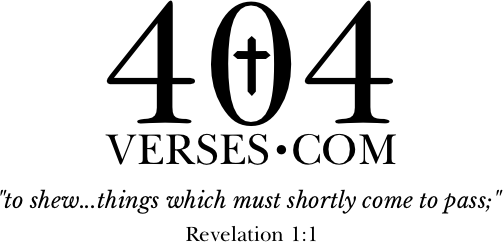And in the midst of the seven candlesticks one like unto the Son of man, clothed with a garment down to the foot, and girt about the paps with a golden girdle.
And in the midst of the seven candlesticks one like unto the Son of man,
John recognizes Jesus standing “in the midst of” the heavenly seven-branched candelabra of the heavenly sanctuary (see on Revelation 1:12). Though glorified (see on Revelation 1:14), Jesus is still portrayed as being fully human as well as fully God (Luke 24:33-40; John 1:14; John 5:26, 27; John 20:24-28; Galatians 4:4; Hebrews 8:1-6).
clothed with a garment down to the foot, and girt about the paps with a golden girdle.
Jesus is seen to be wearing a “garment” specifically described as one which reaches down to his feet. At first, this may seem to be John’s simple observation of a common, somewhat non-descript robe. But, then again, why would he not just say robe? Wouldn’t we assume that they are relatively long by nature? Yet, it is interesting to note that in the language from which this qualification comes‒according to the highly recognized eighteenth-century Greek scholar, Johann Albrecht Bengel‒it is found to refer specifically to the long flowing garment of Aaron, which associates it exclusively to the sacred clothing worn by the high priest which, by virtue of its design, touches the feet (Bengel’s Gnomon of the New Testament). A well-known theologian and scholar of the same century, Adam Clarke, without any apparent doubt, declares, “This is a description of the high priest, in his sacerdotal robes…. Jesus is our high priest, even in heaven. He is still discharging the sacerdotal functions before the throne of God” (Clarke’s Commentary). To this same function, Clarke also associates the “emblem” of the “golden girdle”. In agreement with this association, Horatius Bonar‒a Scottish churchman and prodigious hymnodist of the nineteenth century‒states in his commentary:
“He is clothed with the long robe, and He girt round the bosom with a belt of gold (Isaiah 6:1; Ezekiel 10:2; Daniel 10:5). The ROBE reaching to the feet was the robe of kings and priests—and this Son of man is both. It is the Melchizedek dress, the priestly-royal robe; for glory, and for beauty, and for majesty. His BELT is not that of the waist or loins, like warriors, or the servant’s. It is for adorning—it is the symbol of dignity—it belongs to priest and prince—it suits the crown and the throne on which the Son of man is seated in regal glory, yet as a ministering Priest in the Holy Place, attending to the service there, caring for the vessels of ministry, and especially trimming the lamps, or keeping their fine gold ever bright and shining.”
For other prominent sources regarding the depiction of Jesus as High Priest in Revelation 1:13, see “Cambridge Bible for Schools and Colleges”, “Expositor’s Dictionary of Texts”, “Ellicott’s Commentary for English Readers”, “Expositor’s Greek Testament”, “Gill’s Exposition”, and “Jamieson-Fausset-Brown Bible Commentary”. Many others could be added here.
So, in light of the above, we can confidently conclude that Jesus is, here, seen by John to be working in the capacity of High Priest in the heavenly sanctuary. Is this representation of the world’s Savior new? By no means, for it is poignantly and eloquently brought forth, in the book of Hebrews, as integral to the believer’s hope of his or her “eternal inheritance” ‒for Jesus is the High Priest of the New Covenant (Exodus 28:2-8; Daniel 10:5, 6; Hebrews 8:1-6; Hebrews 9:24). What more appropriate way, then, could there be for the Christian, through the eyes of John, to behold the One who “offered himself without spot to God” to purge our “conscience from dead works to serve the living God” and still, today, appears “in the presence of God for us”? Exodus 28:2-8; Daniel 10:5, 6; Hebrews 8 and 9.

